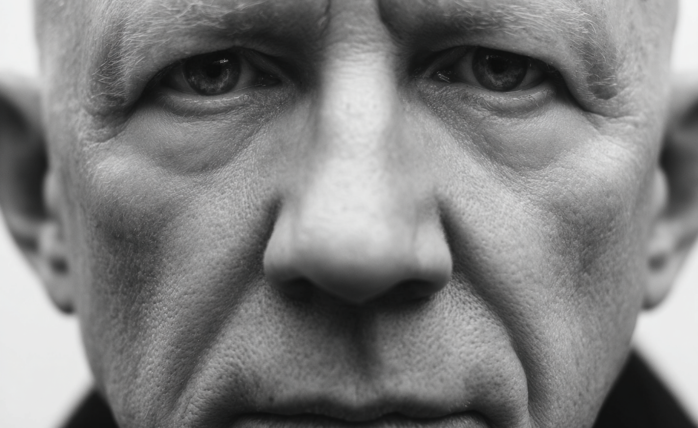Change Your Mindset
Navigating The Depths Of Self-Love And Relationships With Stefanos Sifandos

In the vast expanse of personal development and relational expertise, Stefanos Sifandos emerges as a beacon of transformative wisdom. With a journey spanning over two decades, Stefanos has delved into the intricacies of human psychology, relationship dynamics, and self-evolution, crafting a narrative that resonates with the collective longing for deeper connection and self-awareness.
Self-Love Journey
From a turbulent childhood marked by violence and uncertainty, Stefanos embarked on a quest to understand human nature, pain, and potential. His empathic nature, fueled by a desire to make sense of his surroundings, led him to a career in personal development and relationship coaching. With over two decades of experience, he has helped countless individuals, from Olympic gold medalists to corporate leaders, navigate the complexities of human relationships and personal growth.
Stefanos’ journey took a pivotal turn when confronted with his own shadow — his infidelity revealed the depth of his unresolved trauma. This moment of reckoning propelled him into a transformative process of self-examination, leading to profound personal and professional growth. His ability to face his darkest fears and embrace vulnerability allowed him to develop a deeper, more authentic connection with himself and others.
Now, as a father and husband, Stefanos continues to evolve, learning from every relationship and experience. His story is a testament to the power of introspection, resilience, and unconditional love. Through his work, he inspires others to embark on their own hero’s journey, encouraging them to confront their fears, embrace their true selves, and build meaningful, lasting connections.
“Healing begins when we traverse the dark corners of our psyche, face our fears, and step into a life of radical transparency and self-acceptance.” Stefanos
Relationship Philosophy
Stefanos, a seasoned expert with over two decades in personal development, harnesses a rich tapestry of experiences to guide individuals through the complexities of relationships and self-love. Drawing from his own transformative journey, marred by childhood trauma and self-discovery, he advocates for a profound connection with one’s own pain and joy as a pathway to deeper understanding and love.
Stefanos’ work, enriched by engagements with diverse high achievers, from Olympic medalists to CEOs, underscores the universal quest for authentic connection and personal evolution. He emphasises the necessity of facing one’s shadow, fostering play and willingness in relationships, and embracing continuous growth. Stefanos’ approach is a blend of empathetic insight and practical wisdom, offering a roadmap to navigating the nuanced dance of masculine and feminine energetics and cultivating relationships that are both deeply fulfilling and spiritually enlightening.
Stefanos illuminates the path to self-love and intimacy through practices rooted in self-awareness and continual growth. With over two decades in personal development, he emphasises the power of stillness and silence, finding these moments essential for introspection and connection with oneself.
Stefanos integrates physical self-care, like cold immersion and sauna use, to maintain a balanced state of mind and body. He champions the importance of play and novelty in relationships, advocating for a playful spirit to sustain and deepen bonds with partners. His journey reveals a commitment to self-exploration and the courage to face personal shadows, fostering a safe space for intimacy to flourish. Stefanos’ narrative is a testament to the transformative power of embracing vulnerability and the continuous pursuit of self-growth, underscoring the belief that true intimacy begins with a profound connection to oneself.
“The sacred dance of giving and receiving in love is a delicate balance, where the truest form of intimacy is found not in the grand gestures, but in the quiet moments of shared vulnerability and presence.” Stefanos
Sex & Intimacy
Discover the life-altering power of non-ejaculatory orgasm, a mystical journey revealed by relationship expert Stefanos. Dive into an ancient realm where men harness their sexual vitality, transcending the fleeting pleasure of climax.
Stefanos unravels the sacred tapestry of sexual energy, guiding us to preserve our life force for profound intimacy and spiritual awakening. Embrace this transformative practice, merging the physical with the divine, and unlock a wellspring of passion, vitality, and connection. This isn’t just sex; it’s an odyssey into the heart of your erotic essence, where every moment pulses with potential and every breath is an invitation to ecstasy.
Stefanos invites you to reclaim your sexual power, not through the relentless pursuit of orgasm, but by cherishing the journey itself, crafting a legacy of love, vitality, and transcendent pleasure.
A Message To The World
If Stefanos had a global platform, his message would be succinct yet profound:
“Do the thing that you’re unwilling to do but that you know you need to do.”
This call to action embodies the essence of his teachings, urging individuals to confront their fears, embrace their truths, and embark on the journey of transformation with courage and openness.
Stefanos’ journey from a tumultuous childhood to a relationship expert underscores the profound transformation possible in the realm of human connections. His 24-year odyssey through personal and professional development, working with an array of high achievers, has equipped him with unique insights into the dynamics of relationships, especially the interplay of masculine and feminine energies.
His work is vital in today’s society, where distractions and external dissonances challenge the essence of human connection. By integrating deep psychological insights with practical experience, Stefanos guides individuals and couples toward cultivating divine unions and authentic relationships. His approach, focusing on inner work, play, and willingness, offers a blueprint for evolving relationships in the modern era. Stefanos’ narrative is not just a story of personal triumph but a beacon for those navigating the complexities of love, intimacy, and self-discovery in our rapidly changing world.
Key Takeaways For Your Self-Love And Relationship Journey
- Embrace Your Inner Journey: Recognize that the path to fulfilling relationships and self-love begins with confronting and healing your own traumas and shadows.
- Cultivate Presence and Play: Regular engagement in playful activities and mindful presence enhances intimacy and connection in relationships.
- Practice Non-Attachment in Love: Explore the depths of intimacy with a balanced approach to sexual expression, understanding that love and desire can exist in expansive, yet grounded ways.
- Be Willing and Open: Approach life and relationships with a willingness to engage in difficult conversations, embodying honesty and integrity in your interactions.
- Believe in Your Potential: Surround yourself with people who believe in you and support your growth, as relationships are pivotal in navigating the journey towards personal and financial fulfillment.
Connect With Stefanos Sifandos
Life
10 Research-Backed Steps to Create Real Change This New Year
This New Year could finally be the one where you break old patterns and create real, lasting change.

Every New Year, we make plans and set goals, but often repeat old patterns. (more…)
Change Your Mindset
The Silent Skill That Makes People Respect You Instantly
What truly earns respect and why most people go about it the wrong way

Everybody craves respect but not everyone earns it. Some people believe that a title, years of experience, or a position of authority automatically entitles them to respect. (more…)
Change Your Mindset
How to Turn Your Mind Into Your Greatest Asset (Instead of Your Enemy)
The thoughts you feed your mind today quietly become the life you live tomorrow.

The human mind has two parts: the conscious mind and the subconscious mind. Both work together, but each has a very distinct role in shaping your life, decisions, habits, and results. (more…)
Did You Know
The Success Patterns You Inherited (And Didn’t Notice)
Your family history may hold the key to why you think, act, and feel the way you do today.

Who are you? Your experiences and your family’s narratives and legacies contribute to your identity. Your ancestry contains individual traits and forces that have been inherited over the years. It also carries the fights and victories of your forebears and older family members. (more…)
-

 Change Your Mindset4 weeks ago
Change Your Mindset4 weeks agoThe Silent Skill That Makes People Respect You Instantly
-

 Did You Know3 weeks ago
Did You Know3 weeks agoHow Skilled Migrants Are Building Successful Careers After Moving Countries
-

 Life4 weeks ago
Life4 weeks ago10 Research-Backed Steps to Create Real Change This New Year
-

 Tech3 weeks ago
Tech3 weeks agoWhat’s in a Name? How to Get Your Domain Right













